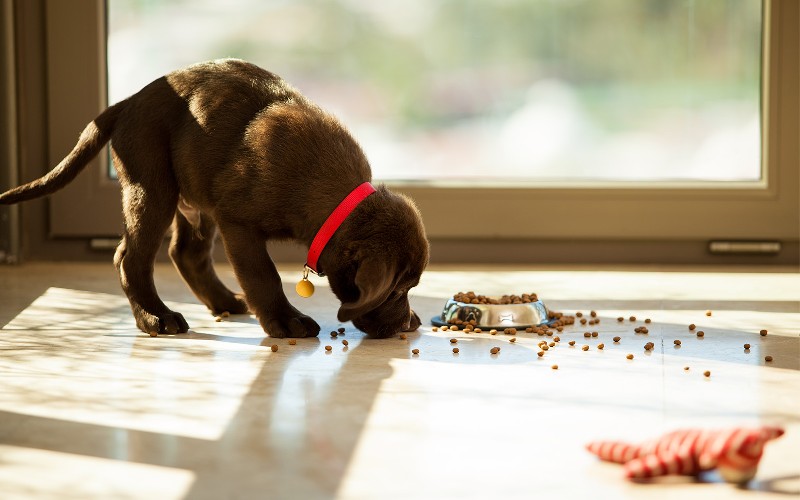
How to transition your pet’s diet safely: A step-by-step guide
Changing your pet’s diet can be necessary for various reasons, such as addressing dietary sensitivities, improving health, or simply trying out a new food. To ensure a smooth transition, follow this detailed guide on how to safely introduce a new diet to your four-legged friend!Why is diet transitioning important?
Dogs and cats are sensitive to changes in their diet. A sudden switch doesn’t allow their digestive system to adapt to the introduction of new ingredients, which may require different digestion times, thus causing digestive upset and leading to common gastrointestinal issues like diarrhea or vomiting. A gradual transition on the other hand, allows them to easily adjust to the newly introduced food and so mitigate this risk of digestive disruption.
Moreover, it's important to consider your pet's individual taste preferences. Gradually transitioning to the new food allows their taste buds to adjust, making them more likely to accept and enjoy the new flavor.
A step-by-step guide to transitioning your pet’s diet
- Choose the right time
- Health status: Ensure your pet is healthy before making any dietary changes. If your pet is ill or has a sensitive stomach, consult with your Vet or Farmina Nutrition Consultant before starting the transition.
- Stress factors: Try to make dietary changes during a period of stability in your pet’s life, avoiding times of stress such as moving home or changes in the household.
- Select a High-Quality Food
- Nutritional Needs: Choose a food that meets your pet’s specific nutritional needs. Consult your Farmina Consultant or Vet to ensure the new food is appropriate for its age, health, and dietary requirements.
- Recognize the differences between the two foods: Knowing the composition and the main differences between the two foods is essential for a correct transition. For more information read the dedicated article: Understanding pet food labels: 6 essential tips for evaluating your pet’s food
- Start with a gradual introduction
- Initial mixing: Begin by mixing a small amount of new food with your current one. Use a ratio of about 75% old food to 25% new food.
- Monitor reactions: Observe your pet’s reaction to the new food. Look for any signs of digestive upset such as vomiting, diarrhea, or changes in appetite.
- Increase the new food gradually
- Adjust ratios: Over the course of 7-10 days, gradually increase the proportion of the new food while decreasing the old food.
- Daily monitoring: Check your pet’s stool and overall health daily. If you notice persistent issues, slow down the transition and consult your Vet or Nutrition Consultant for advice.
- Adjust portions and feeding frequency
- Portion control: Ensure you’re feeding the correct portions based on the new food’s nutritional content. Overfeeding or underfeeding can lead to bad eating habits and eventually to health issues.
- Consistency: Maintain a consistent feeding schedule to help your pet adjust to the new food. Cats and dogs thrive on routine, and a regular feeding schedule can support a smooth transition.
- Be patient and observant
- Take your time: Transitioning can take time, especially if the new food is very different from the old one. Patience is key to ensuring a successful switch.
Here’s a suggested timeline for a 10-day transition period:
- Days 1-3: Start with a small amount of new food (25%) mixed with the old (75%). Monitor for any digestive issues.
- Days 4-6: Increase the amount of new food (50%) and decrease the old food (50%). Continue to observe your pet’s response.
- Days 7-9: Further increase the proportion of new food (75%). Ensure your pet is adjusting well and not showing signs of discomfort.
- Day 10: Fully transition to the new food (100%). Check for any signs of digestive upset or changes in appetite
Connect Now!
Conclusion
Switching your pet’s diet doesn’t have to be a stressful process. By following these steps and being attentive to his needs, you can ensure a smooth and successful change. A gradual approach, combined with careful monitoring, will help your four-legged friend adjust comfortably to his new diet. Remember, patience and consistency are your best tools for a successful dietary transition.

